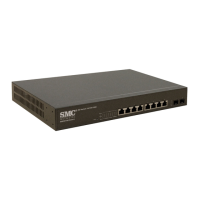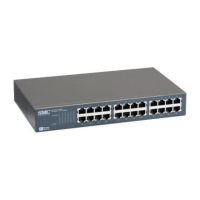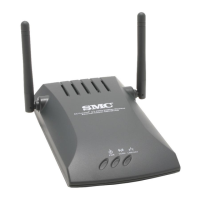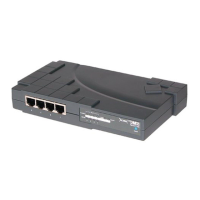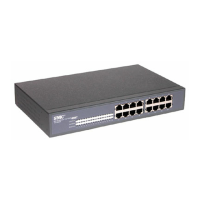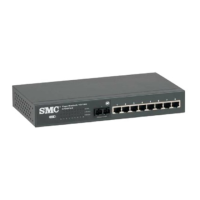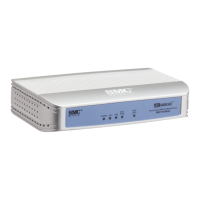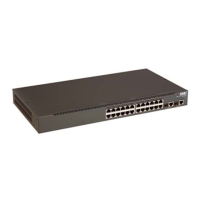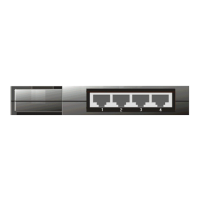C
HAPTER
4
| Configuring the Switch
Creating Trunk Groups
– 114 –
Figure 39: Static Trunk Configuration
CONFIGURING LACP Use the LACP Port Configuration page to enable LACP on selected ports,
configure the administrative key, and the protocol initiation mode.
PATH
Configuration, Aggregation, LACP
USAGE GUIDELINES
◆ To avoid creating a loop in the network, be sure you enable LACP before
connecting the ports, and also disconnect the ports before disabling
LACP.
◆ If the target switch has also enabled LACP on the connected ports, the
trunk will be activated automatically.
◆ A trunk formed with another switch using LACP will automatically be
assigned the next available trunk ID.
◆ If more than eight ports attached to the same target switch have LACP
enabled, the additional ports will be placed in standby mode, and will
only be enabled if one of the active links fails.
◆ All ports on both ends of an LACP trunk must be configured for full
duplex, either by forced mode or auto-negotiation.
◆ Trunks dynamically established through LACP will be shown on the
LACP System Status page (page 225) and LACP Port Status (page 226)
pages under the Monitor menu.
◆ Ports assigned to a common link aggregation group (LAG) must meet
the following criteria:
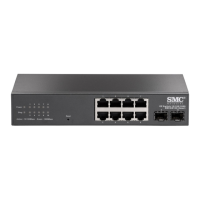
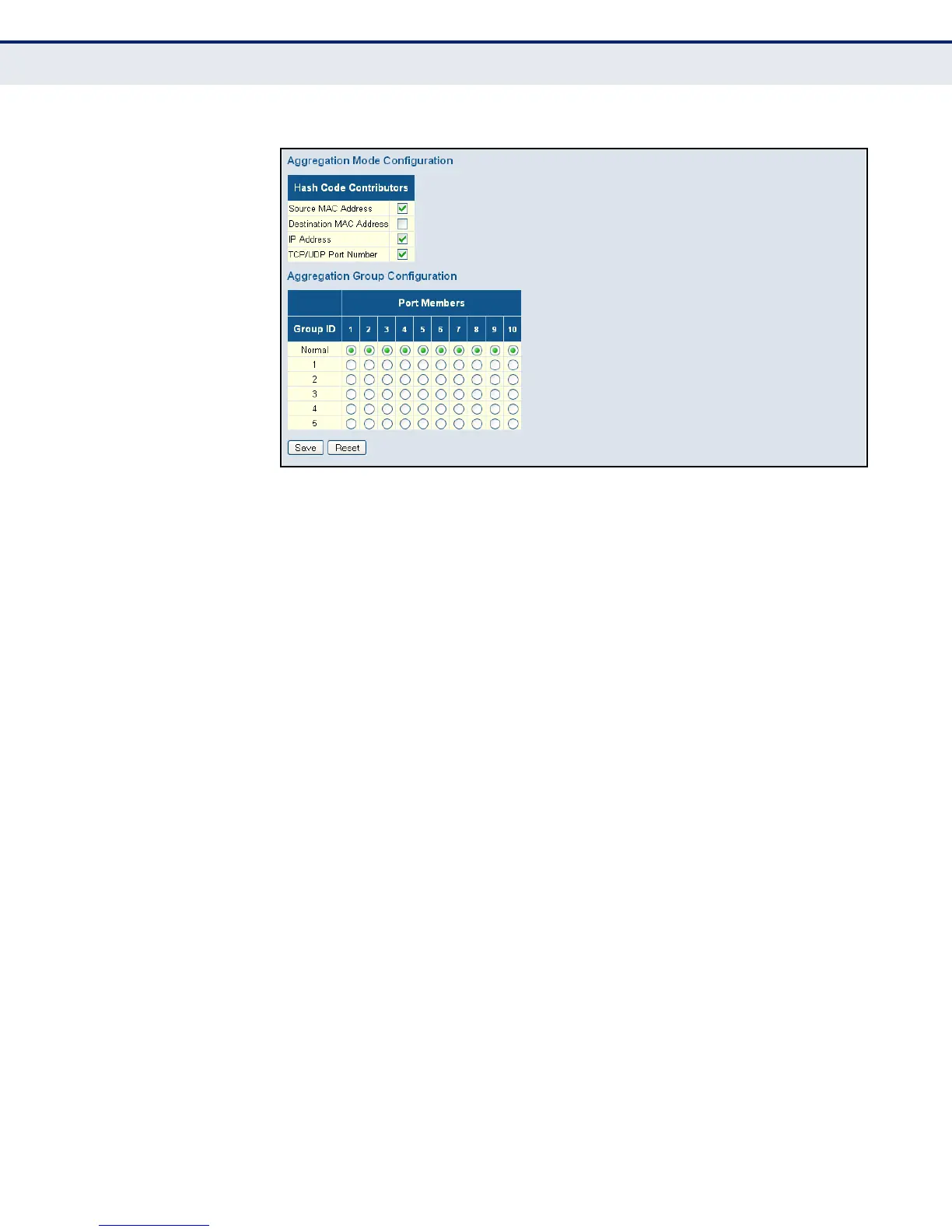